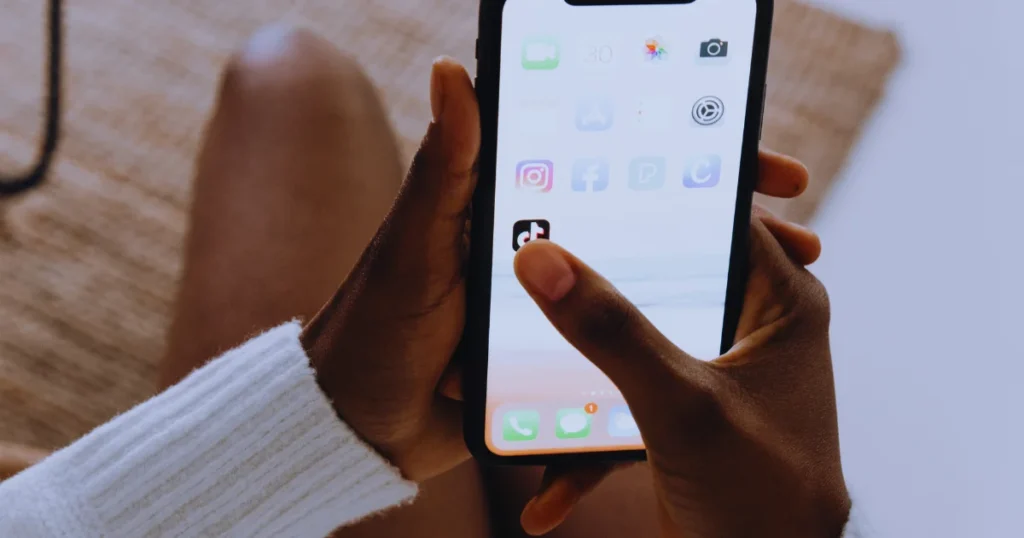Hey, TikTok lover! Have you ever wondered how much data one of the most popular special media apps consumes? Not everyone wants to pay enough attention to figure this out.
But knowing TikTok’s data consumption makes sense if you are curious about what consumes most of your data plan.
So, how much data does TikTok use? It depends on the video quality you prefer or have in order to watch the videos on the platform.
If you watch videos in HD quality, then it’s quite usual that the app will consume more data than the standard quality. The amount of time you use TikTok also comes into play.
In today’s episode, we’ll break down TikTok’s data consumption factors. At the end of the blog, you’ll have a clear idea of the topic. Plus, there are ways to reduce the consumption of data. Let’s make it.
Key Takeaways:
- The quality of the videos watched largely determines TikTok’s data usage.
- To enjoy TikTok HD videos (1080p and above), around 1 GB of data should be on the card.
- Set a personal goal for how much data you want TikTok to consume and track it regularly.
- Switch between data plans or turn off data entirely when not needed, helping you stay within your budget and avoid unexpected data charges.
How Much Data Does TikTok Use?
An hour is used as an example when determining TikTok’s data usage, which is standard. Do you remember what we mentioned in the intro?

TikTok’s data consumption largely depends on the quality of the videos you watch.
Let’s have a look at TikTok data usage per hour;
| Video Quality | For 3o Minutes | For 1 Hour |
| Standard Quality (480p) | 250 MB | 500 MB |
| High Quality (720p) | 400 MB | 800 MB |
| HD videos (1080p and above) | 500 MB | 1 GB |
Note: We mentioned the approximate data usage for TikTok videos based on the quality of the videos and consumption period. A slight chance can occur.
How Much Data Does TikTok Live Streaming Use?
Unlike watching random videos on TikTok, live streaming often consumes more data.
The exact data usage depends on the mobile or Wi-Fi network you are in, the video quality you are streaming, and the duration of the live stream.
We don’t have any official statement from TikTok about the consumption of live-streaming data.

The fact will remain the same if you ask how much data Whatsapp uses. But yes, from in-depth research, we have come to a point, and that’s presented below;
| Streaming Quality | Amount of Data Consumed per Minutes | Among of Data Consumed per Hours |
| Standard Quality (480p) | 12-15 Mbps | 0.7-1 GB |
| High quality (720p) | 15-25 Mbps | 1-1.5 GB |
| HD videos (1080p and above) | 25-42 Mbps | 1.5-2.5 GB |
Data Usage Comparison TikTok vs YouTube
The comparison just got intense. Yes, you read that right. As both platforms become popular as the day progresses, knowing what consumes more data is not surprising, is it?
However, YouTube consumes more data than TikTok because of its higher default video quality. The duration of the videos should also play a key part in the comparison.
As you know, TikTok videos are often shorter than the YouTube standard videos, except for the Shorts. But it is also true that there won’t be a massive difference.
To enjoy TikTok HD videos (1080p and above), around 1 GB of data should be on the card. YouTube videos of the same duration and quality can be around 2.5-3GB of data, considering the network quality simultaneously.
How to Check TikTok Data Usage?
The process can vary a bit depending on your mobile device. But the basic idea will remain the same. On Android, all you need to do is;
- Open the device’s Settings app.
- Select “Apps” or “Applications” based on the device.
- Select TikTok from the installed apps list.
- Check “Data Usage” or “Usage” for TikTok’s data usage over the last 30 days.
If you are an iPhone device, follow these proceedings to check and monitor TikTok data consumption;
- Open the Settings app on the home screen.
- Select Cellular from the list.
- Find TikTok from the list of apps.
- View data usage under “Current Period.”
- Reset statistics by scrolling to the bottom.
Does TikTok Use a Lot of Data?
No, compared to other video-based social media platforms, TikTok’s consumption rate is not that high; instead, it is somewhat standard.
For example, around 1.5 GB of data is needed to watch an HD-quality YouTube video.
But this is around 1GB for TikTok. The scenario remains almost the same if you compare TikTok with Instagram Reels.
If you compare this with Facebook videos, there isn’t a significant difference. The data consumption always remains the same for the two platforms.
Tips to Reduce Data Consumption on TikTok?
If you think TikTok is just killing your mobile data and your love for it is so immense that you can’t detach it from you, there are ways you can reduce your data consumption. Yes, we mean it. But how?
Enable Data Saver Mode
This is one of the most efficient ways to reduce TikTok’s data consumption on your mobile device. To do that,
- Step 1: Open the TikTok App on your mobile.
- Step 2: Go to profile and tap the three lines in the top corner.
- Step 3: Tap on ‘Data Server.’
- Step 4: Turn on the toggle.
Download Videos to Watch Offline
TikTok allows users to download videos to watch offline. So, when you are on a WiFi network, you can download some videos to watch later. To do this, open the video that you want to download.
Then tap on the share sign on the right of your screen.
Once you do this, you will find the ‘Save Video’ option and boom, you are all done downloading the video. You can have the luxury of limitless video downloads that you can watch in the future.
Keep Track of the Data TikTok Consumes
First, you need to set a goal, asking how much data you want TikTok to consume. Then, by keeping track of the data consumption, let’s say for a day, you can reduce the high data consumption on a large scale.
Consider using an eSIM to manage your data usage more effectively.
With an eSIM, you can easily switch between data plans or even turn off data entirely when not needed, helping you stay within your budget and avoid unexpected charges.
However, you need to check whether your mobile device is eSIM compatible.




